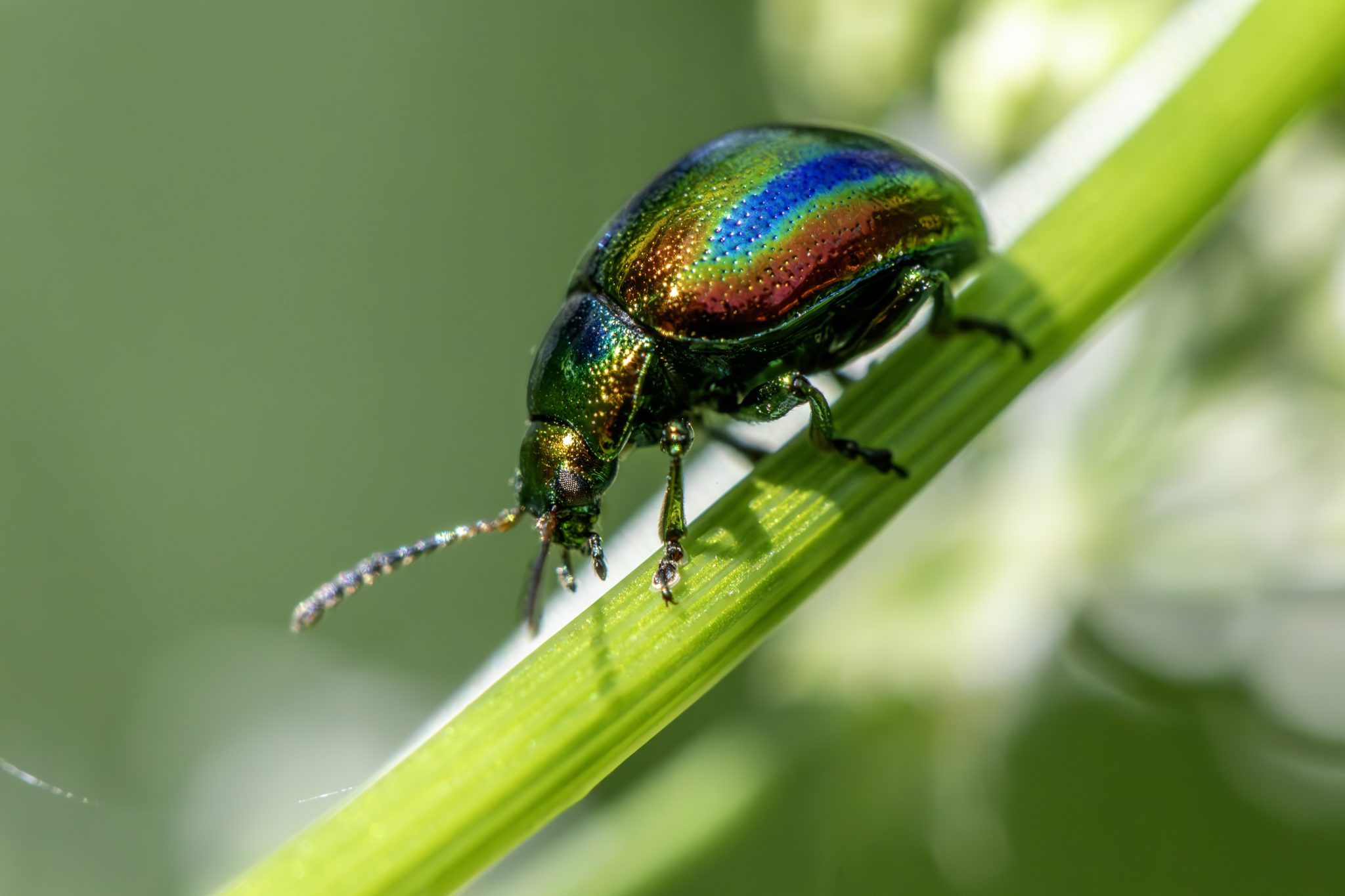Dead-Nettle Leaf Beetle (Chrysolina fastuosa)
The Dead-nettle leaf beetle, Chrysolina fastuosa, is a stunning metallic beetle belonging to the Chrysomelidae family (leaf beetles). It is best known for its vibrant iridescent colors and its close association with dead-nettles and other mint-family plants.
🪲 Identification
- Size: ~6–8 mm in length
- Shape: Oval, convex body
- Coloration:
- Iridescent: brilliant green, blue, purple, or bronze
- Often has a striped appearance with metallic hues
- Antennae: Thin, black, and relatively long
The brilliant, jewel-like coloring helps distinguish this beetle from other leaf beetles.
🌿 Habitat
- Found in:
- Meadows
- Roadside verges
- Field margins
- Gardens, especially those with wild plants
- Prefers areas with dead-nettles (Lamium spp.), hedge woundwort, and other mint-family (Lamiaceae) plants
🌱 Diet
- Larvae and adults feed primarily on:
- Dead-nettle leaves
- Hedge woundwort (Stachys sylvatica)
- Other members of the mint family
- Creates distinctive holes in leaves as it grazes
🔁 Life Cycle
- Adults are most commonly seen from spring to late summer
- Eggs are laid on host plants
- Larvae feed on the same foliage before pupating in the soil
- One or possibly two generations per year, depending on climate
🌍 Distribution
- Widespread across:
- Europe, including the UK
- Occasionally seen in temperate regions of Asia
- Considered locally common but easily overlooked due to its small size
🧬 Interesting Facts
- The iridescence is not from pigment, but from structural coloration, caused by microscopic layers in the cuticle that reflect light
- Despite its dazzling colors, it has effective camouflage among the shiny green leaves of its host plants
- Plays a minor role in controlling overgrowth of certain mint-family plants
The Dead-nettle Leaf Beetle is a perfect example of nature’s artistry in miniature. Its brilliant, shifting colors and preference for wildflowers make it a charming species to spot for nature lovers and photographers alike.
Visited 35 times, 1 visit(s) today
Views: 1257
Subscribe to the newsletter:
